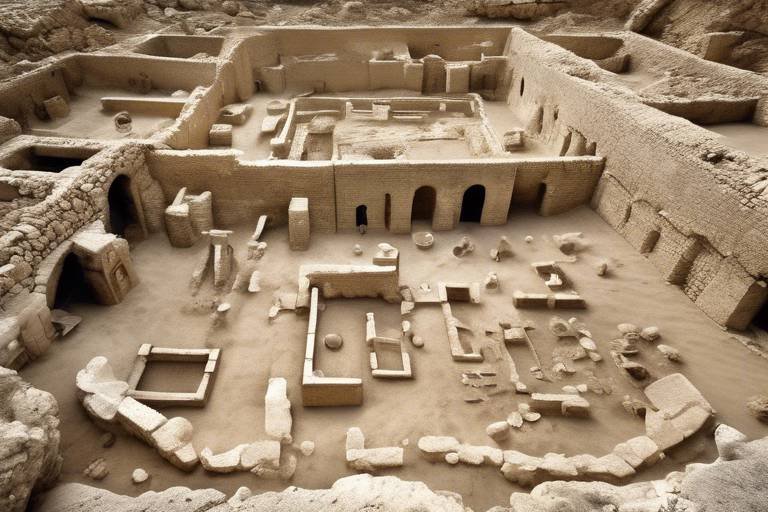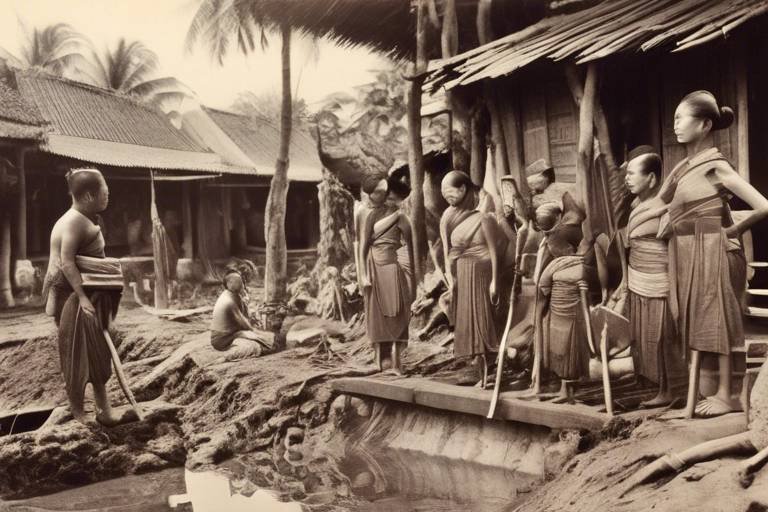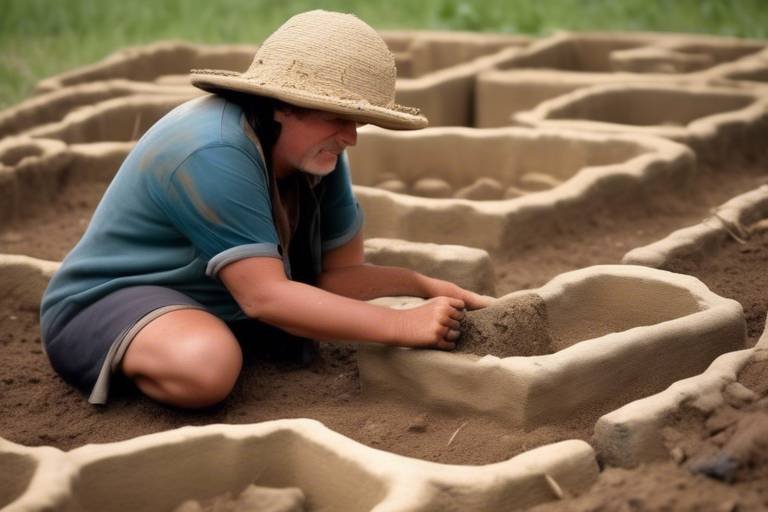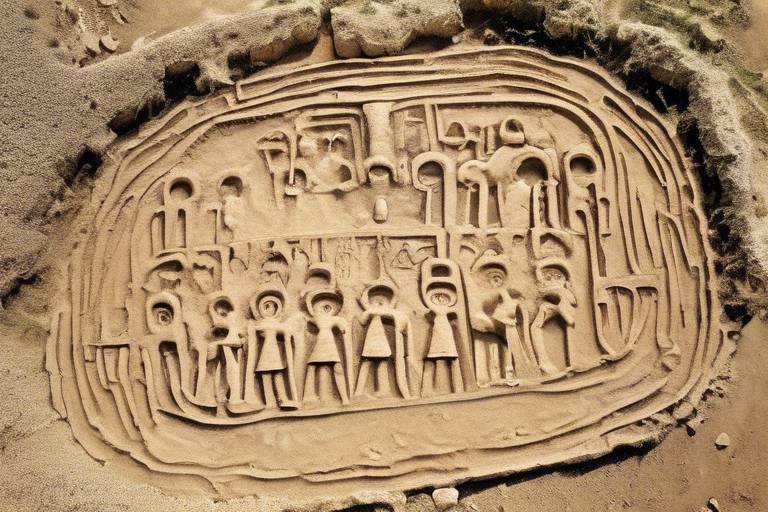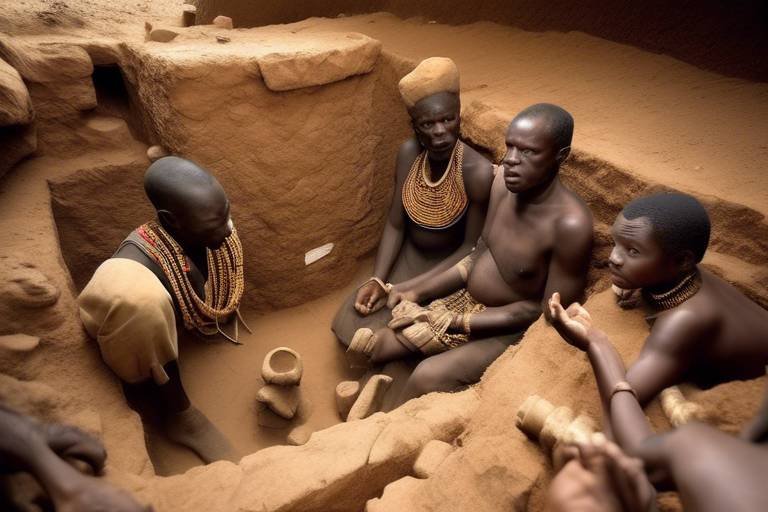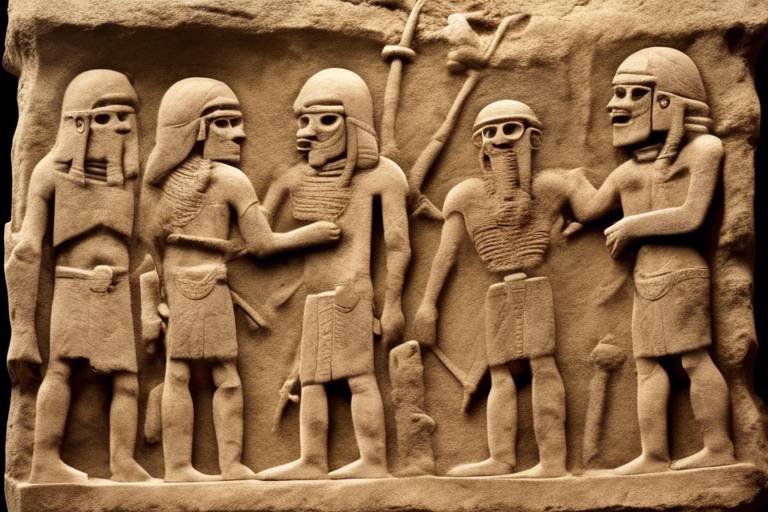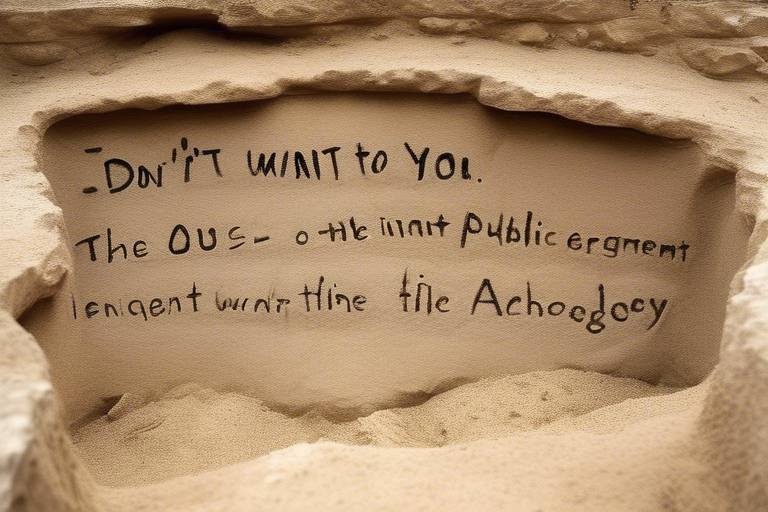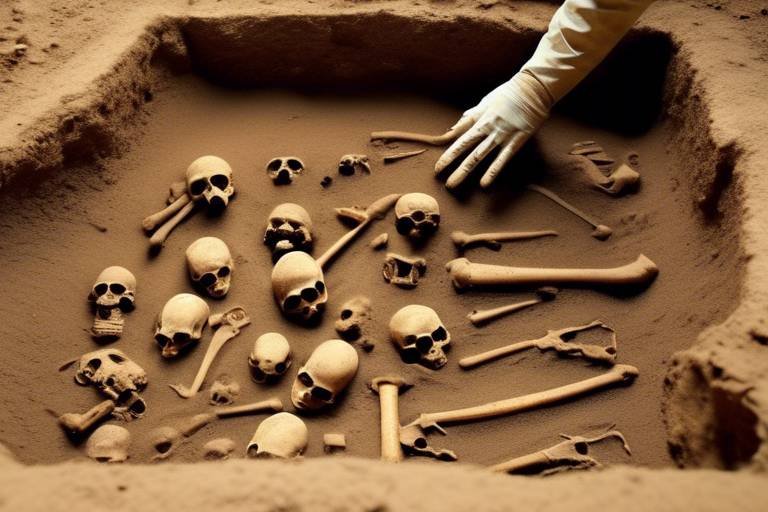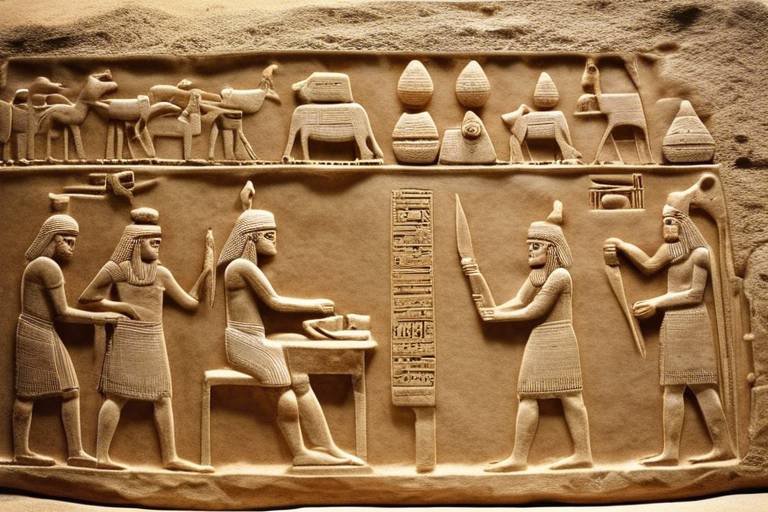Fieldwork Essentials - Tools Every Archaeologist Needs
Archaeological fieldwork is a meticulous and fascinating process that requires a specific set of tools to ensure the successful excavation, documentation, and preservation of historical artifacts. Without the proper tools, archaeologists would struggle to uncover and study the remnants of ancient civilizations that provide valuable insights into our past.
One of the most fundamental tools in an archaeologist's kit is the trowel. This handheld tool is crucial for delicately digging and excavating artifacts and soil layers without causing any damage. Its precision design allows archaeologists to carefully uncover and expose artifacts buried beneath the earth's surface.
When it comes to cleaning artifacts and delicate surfaces, brushes play a vital role in the fieldwork process. Soft-bristled brushes are used to gently remove dirt and debris from artifacts and bones without causing any harm. These brushes ensure that artifacts are cleaned effectively without risking damage to their delicate structures.
Accurate documentation of artifacts is essential in archaeology, and measuring tools such as tape measures, rulers, and calipers are indispensable for recording the dimensions and locations of artifacts within a site. These tools help archaeologists create detailed records of their findings, allowing for precise analysis and interpretation.
During excavation, screening tools like sieves and screens are used to sift through soil and recover small artifacts and ecofacts that may be easily overlooked. By carefully screening excavated material, archaeologists can ensure that no valuable artifacts are missed during the excavation process.
To record observations and data in the field, archaeologists rely on a field notebook to jot down detailed notes, sketches, and measurements. This essential tool serves as a comprehensive record of the excavation process, enabling researchers to analyze their findings thoroughly.
Photographic equipment, including cameras and photography tools, are essential for capturing high-quality images of artifacts, features, and excavation processes. These images are invaluable for documentation, analysis, and presentation, providing visual records of archaeological discoveries.
Global Positioning System (GPS) devices are used by archaeologists to accurately map and record the precise locations of excavation sites, artifacts, and features. By utilizing GPS technology, researchers can conduct spatial analysis and create detailed maps of archaeological sites.
Proper storage and organization of artifacts are crucial during fieldwork, and artifact bags and labels are essential for safely transporting and identifying artifacts. Durable bags and labels help archaeologists keep track of their findings and ensure that each artifact is properly documented and preserved.
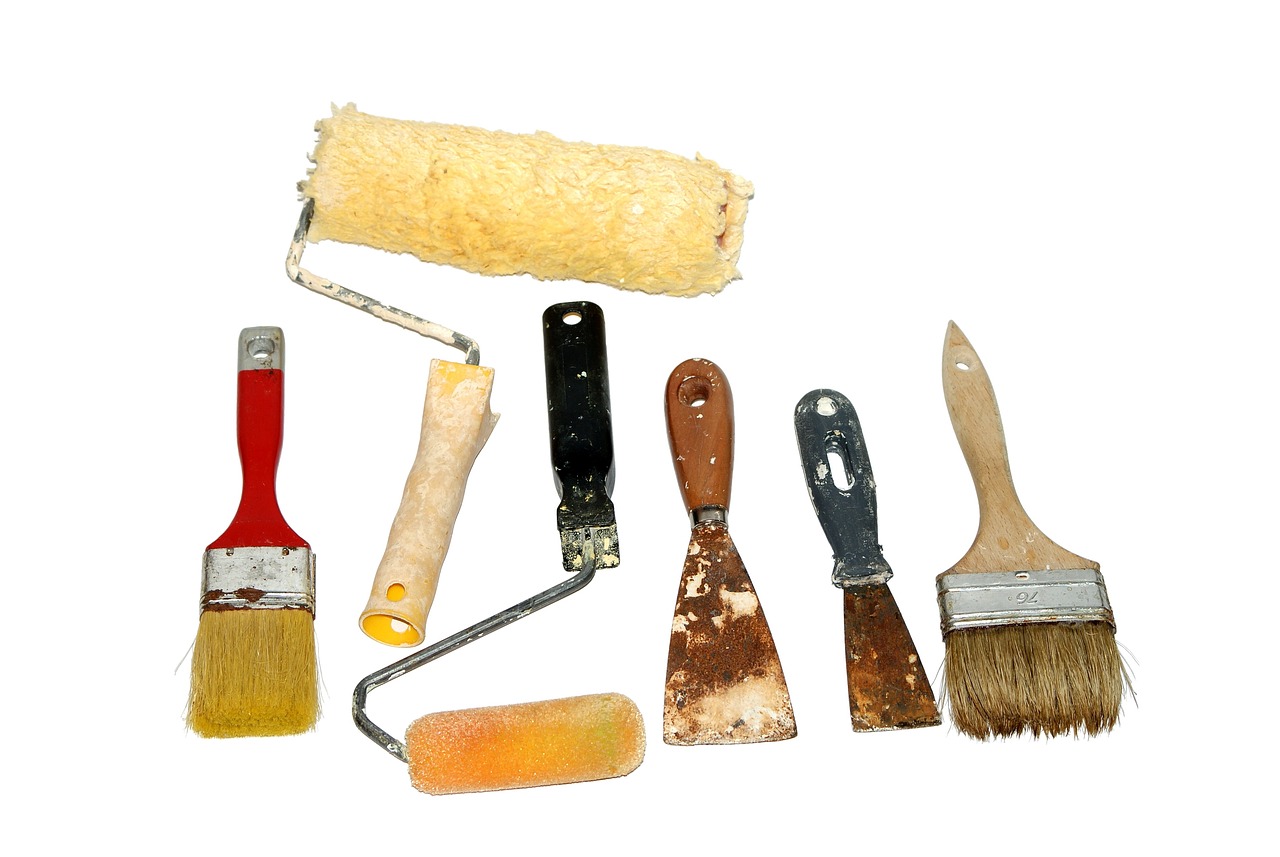
Trowel
Exploring the necessary tools for successful archaeological fieldwork, ensuring proper excavation, documentation, and preservation of historical artifacts.
An essential tool for digging and excavating delicate artifacts and soil layers without causing damage, commonly used in archaeological fieldwork for precision work.
When it comes to excavation in archaeology, a is like a surgeon's scalpel. It allows archaeologists to delicately uncover artifacts buried beneath the layers of soil, revealing pieces of history without causing harm. Just as a skilled artist uses a fine brush to bring detail to a painting, an archaeologist wields a trowel with precision to unveil the past.
Imagine trying to uncover a fragile ancient pottery shard without the finesse of a trowel. It would be like trying to defuse a bomb with a sledgehammer - disastrous! The sharp edge of the trowel slices through the earth, exposing artifacts with care and accuracy, ensuring that each piece is revealed intact and ready for further study.
Archaeologists rely on their trusty trowels to carefully remove layers of soil, one by one, like peeling back the pages of a history book. The trowel's pointed tip allows for detailed work, while its sturdy construction ensures durability in the field. It's not just a tool; it's a companion in the quest to uncover the secrets of the past.
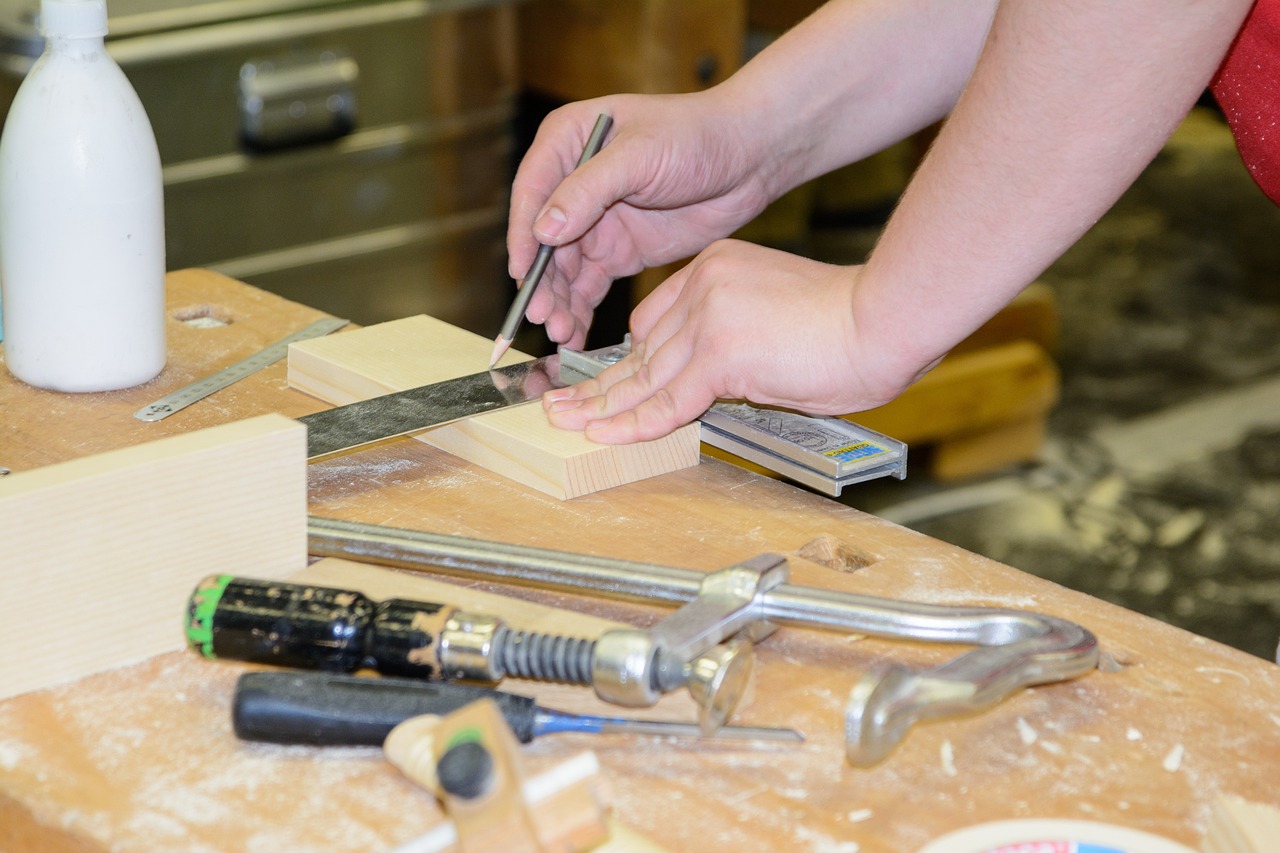
Brushes
When it comes to archaeological fieldwork, one of the essential tools that every archaeologist needs in their kit is a good set of brushes. These soft-bristled brushes play a crucial role in delicately removing dirt and debris from artifacts, bones, and delicate surfaces during excavation. The gentle nature of the brushes ensures that the artifacts are cleaned without causing any damage, allowing for a more precise examination of the items unearthed.
Imagine trying to uncover a fragile pottery shard or a tiny bone fragment buried beneath layers of soil without the aid of a brush. The risk of damaging these delicate finds would be incredibly high. That's why brushes are considered indispensable in the field of archaeology, enabling researchers to uncover and preserve artifacts with care and precision.
Additionally, brushes are not only used for cleaning artifacts but also for revealing intricate details that may be hidden beneath layers of dirt. By gently brushing away the soil, archaeologists can unveil the true beauty and craftsmanship of ancient objects, providing valuable insights into past civilizations and cultures.
Furthermore, brushes are versatile tools that can be used in various excavation tasks, from uncovering small artifacts to cleaning delicate surfaces. Their soft bristles make them ideal for working with fragile materials, ensuring that each discovery is handled with the utmost care and attention to detail.
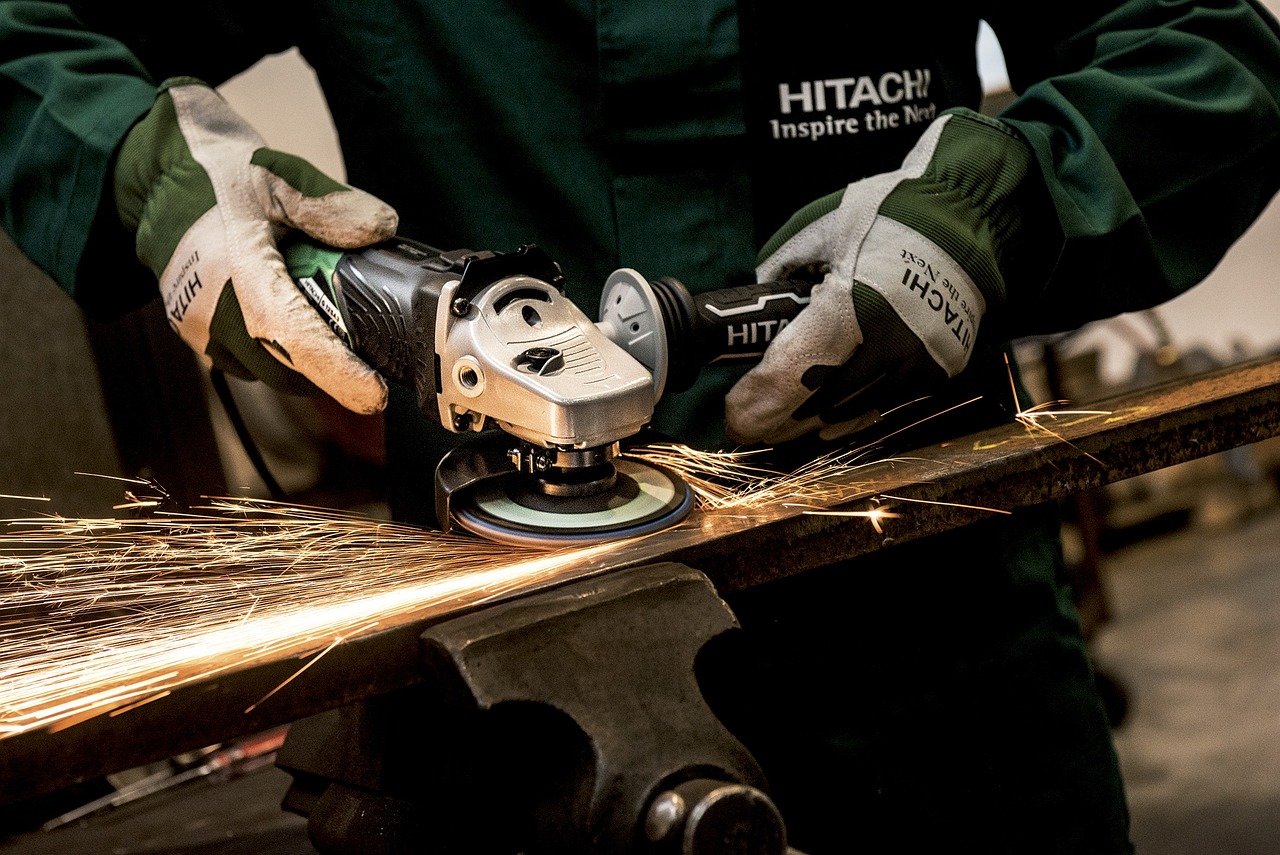
Measuring Tools
When it comes to archaeological fieldwork, accurate measurements play a crucial role in documenting and understanding historical artifacts. Measuring tools such as tape measures, rulers, and calipers are indispensable for archaeologists to record the dimensions and locations of artifacts within a site accurately. These tools ensure that precise data is collected, aiding in the analysis and interpretation of archaeological findings.
In addition to measuring artifacts, these tools are also essential for mapping out excavation areas and creating detailed site plans. Tape measures are used to determine distances between artifacts and features, while rulers help in recording the size of objects accurately. Calipers, on the other hand, provide precise measurements of small artifacts and features that require detailed analysis.
Archaeologists rely on these measuring tools not only for excavation purposes but also for documenting stratigraphy and spatial relationships within a site. By recording precise measurements, researchers can reconstruct the layout of past human activities and understand the context in which artifacts were deposited.
Moreover, accurate measurements are crucial for creating scaled drawings and illustrations of archaeological finds. By using measuring tools to gather data on artifact dimensions and locations, archaeologists can produce detailed diagrams that depict the spatial distribution of objects within a site.
Overall, measuring tools are essential for every archaeologist conducting fieldwork, enabling them to collect precise data, document artifacts effectively, and reconstruct the past with accuracy. These instruments not only aid in excavation processes but also play a significant role in the analysis and interpretation of archaeological discoveries.
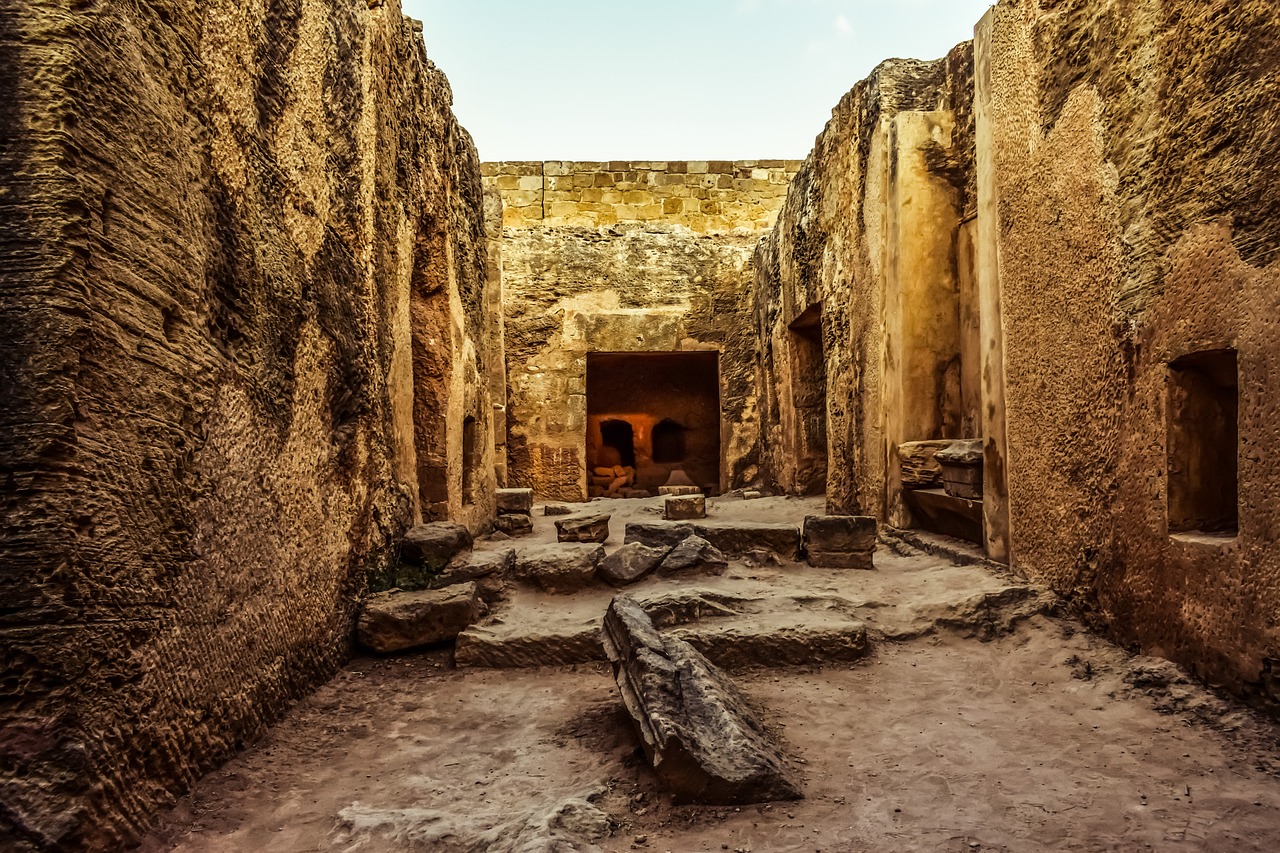
Screening Tools
When it comes to archaeological fieldwork, one of the essential tools that every archaeologist needs is . These tools play a crucial role in the excavation process by allowing archaeologists to sift through excavated soil to recover small artifacts and ecofacts that might otherwise go unnoticed. By using sieves and screens, archaeologists can carefully separate the soil and uncover tiny artifacts that hold valuable information about the past.
Imagine a screening tool as a filter that helps archaeologists sift through layers of soil, much like a treasure hunter sifting through sand to find hidden gems. These tools enable archaeologists to meticulously search for and retrieve even the tiniest artifacts, ensuring that no valuable piece of history is left behind.
By using screening tools, archaeologists can enhance the accuracy of their excavations and gain a more comprehensive understanding of the archaeological site. These tools not only aid in the recovery of artifacts but also contribute to the preservation of delicate items that might be easily damaged during the excavation process.
Furthermore, screening tools are invaluable for conducting thorough analyses of the archaeological site. By carefully sifting through the soil and separating artifacts from debris, archaeologists can gather critical data that sheds light on past human activities, environmental conditions, and cultural practices.
In summary, screening tools are indispensable instruments that enable archaeologists to uncover hidden treasures buried beneath the earth's surface. With their meticulous sifting capabilities, these tools play a vital role in the excavation process, ensuring that every artifact, no matter how small, is discovered, documented, and preserved for future generations to study and appreciate.

Field Notebook
Exploring the necessary tools for successful archaeological fieldwork, ensuring proper excavation, documentation, and preservation of historical artifacts.
An indispensable tool for recording detailed observations, sketches, measurements, and other crucial data during archaeological fieldwork for documentation and analysis. A field notebook serves as a treasure trove of information, capturing the essence of each excavation site in words and drawings. It acts as a companion, faithfully documenting the journey of uncovering history, from the initial discovery to the meticulous recording of artifact details.
Within the pages of a field notebook, archaeologists weave a narrative of the past, translating the silent language of artifacts into meaningful stories. Each stroke of the pen or brush on its pages breathes life into the ancient relics, preserving their essence for future generations to unravel. The field notebook is not merely a collection of notes; it is a portal to the past, a gateway to understanding the mysteries buried beneath the earth's surface.
Organizing information in a structured manner, the field notebook becomes a roadmap for archaeological exploration, guiding researchers through the labyrinth of historical significance. It is a repository of knowledge, a repository of discoveries waiting to be unveiled. The sketches and annotations within its pages are like pieces of a puzzle, slowly coming together to reveal the bigger picture of human civilization's evolution.

Photographic Equipment
Exploring the necessary tools for successful archaeological fieldwork, ensuring proper excavation, documentation, and preservation of historical artifacts.
Photographic equipment is a crucial component of an archaeologist's toolkit, allowing for the detailed documentation and analysis of artifacts and excavation processes. Cameras, ranging from digital to specialized macro lenses, enable archaeologists to capture high-quality images of artifacts, features, and excavation sites. These images serve as valuable visual records, aiding in the interpretation and preservation of archaeological findings.
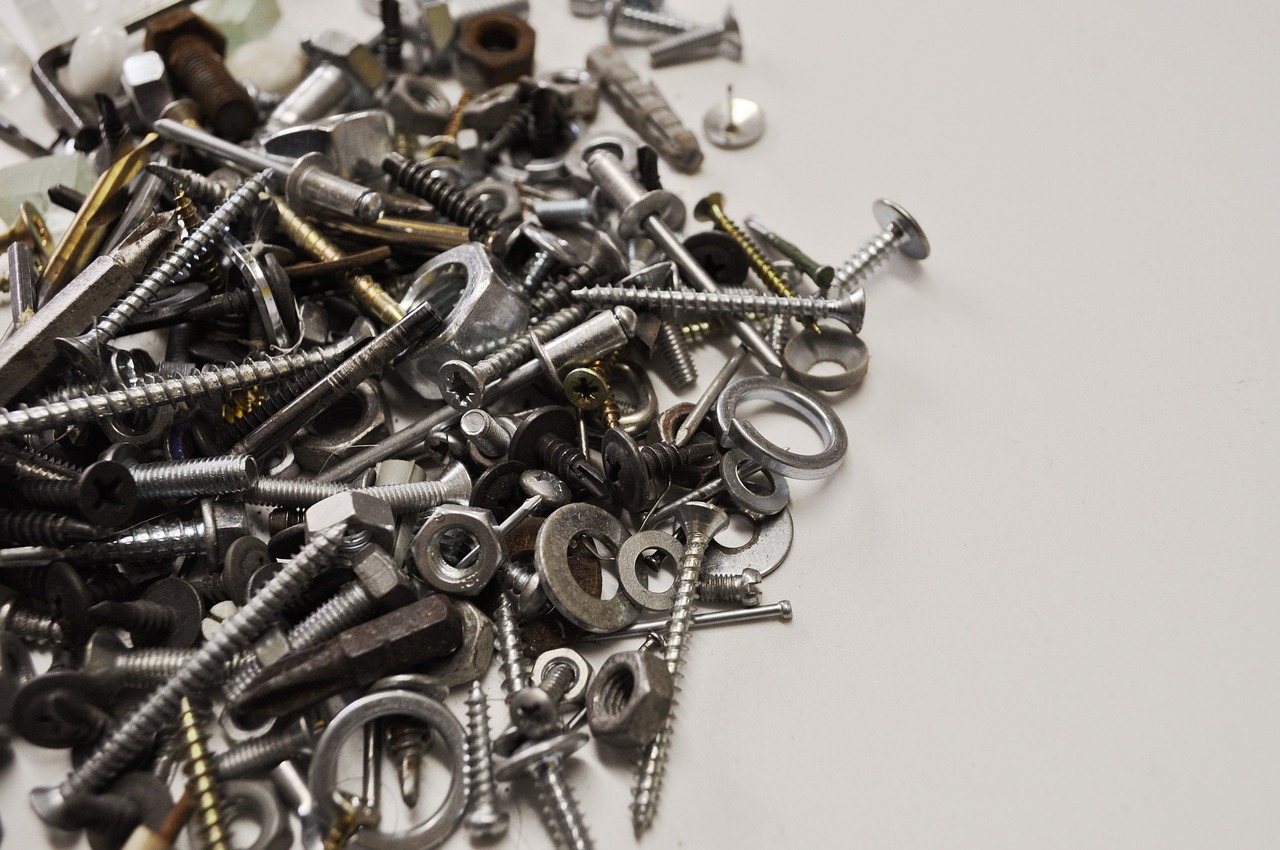
GPS Device
When it comes to conducting successful archaeological fieldwork, having the right tools is essential for excavating, documenting, and preserving historical artifacts. One of the key tools that every archaeologist needs in their kit is a . These devices play a crucial role in accurately mapping and recording the precise locations of excavation sites, artifacts, and features, enabling archaeologists to conduct detailed spatial analysis.
Imagine trying to piece together the puzzle of an ancient site without knowing the exact locations of each artifact or feature. It would be like trying to navigate a maze blindfolded. GPS devices provide archaeologists with the necessary spatial data to create detailed maps and understand the relationships between different elements within a site.
With the advancements in GPS technology, archaeologists can now pinpoint the exact coordinates of artifacts within centimeters, allowing for precise documentation and analysis. This level of accuracy is vital in reconstructing past landscapes and understanding how ancient civilizations interacted with their environment.
In addition to mapping excavation sites, GPS devices also aid in the conservation and preservation of archaeological resources. By accurately recording the locations of artifacts, archaeologists can ensure that these valuable pieces of history are properly documented, protected, and preserved for future generations.

Artifact Bags and Labels
Exploring the necessary tools for successful archaeological fieldwork, ensuring proper excavation, documentation, and preservation of historical artifacts.
When it comes to archaeological fieldwork, artifact bags and labels play a crucial role in the organization, identification, and preservation of unearthed treasures. These durable bags are not just ordinary containers; they are the guardians of history, safeguarding precious artifacts from damage and loss.
Imagine excavating a site filled with ancient relics, each holding a story waiting to be told. Without proper artifact bags, these invaluable pieces of the past could easily get mixed up, misplaced, or damaged during transportation. Just like a skilled archivist, these bags keep everything in order, ensuring that each artifact is safely stored and ready for further analysis.
Moreover, labels are the unsung heroes of archaeological fieldwork. They are the storytellers that provide context and meaning to each artifact. By carefully labeling every bag with essential information such as the artifact's location, date of discovery, and a brief description, archaeologists can trace back the history of each item, connecting it to its rightful place in the archaeological puzzle.
Think of artifact bags and labels as the archaeologist's trusty companions, always by their side throughout the excavation process. Just like a skilled detective relies on evidence to solve a mystery, archaeologists rely on these tools to piece together the story of ancient civilizations, one artifact at a time.
Frequently Asked Questions
- What is the importance of a trowel in archaeological fieldwork?
A trowel is a crucial tool in archaeology for delicately excavating artifacts and soil layers without causing damage. It allows archaeologists to perform precision work during excavation, ensuring the preservation of historical items.
- Why are brushes essential tools for archaeologists?
Soft-bristled brushes play a vital role in gently removing dirt and debris from artifacts, bones, and delicate surfaces during excavation. They help archaeologists clean items without causing harm, allowing for careful documentation and preservation.
- How do measuring tools contribute to archaeological fieldwork?
Instruments like tape measures, rulers, and calipers are essential for accurately recording the dimensions and locations of artifacts within a site. They aid in precise documentation and analysis, ensuring detailed data collection.
- Why is a field notebook considered indispensable in archaeology?
A field notebook is a crucial tool for recording detailed observations, sketches, measurements, and other important data during fieldwork. It serves as a primary source for documentation and analysis, helping archaeologists keep track of their findings.
- What role does photographic equipment play in archaeological work?
Cameras and photography tools are essential for capturing high-quality images of artifacts, features, and excavation processes. They aid in analysis, documentation, and visualization, providing valuable insights into archaeological discoveries.


